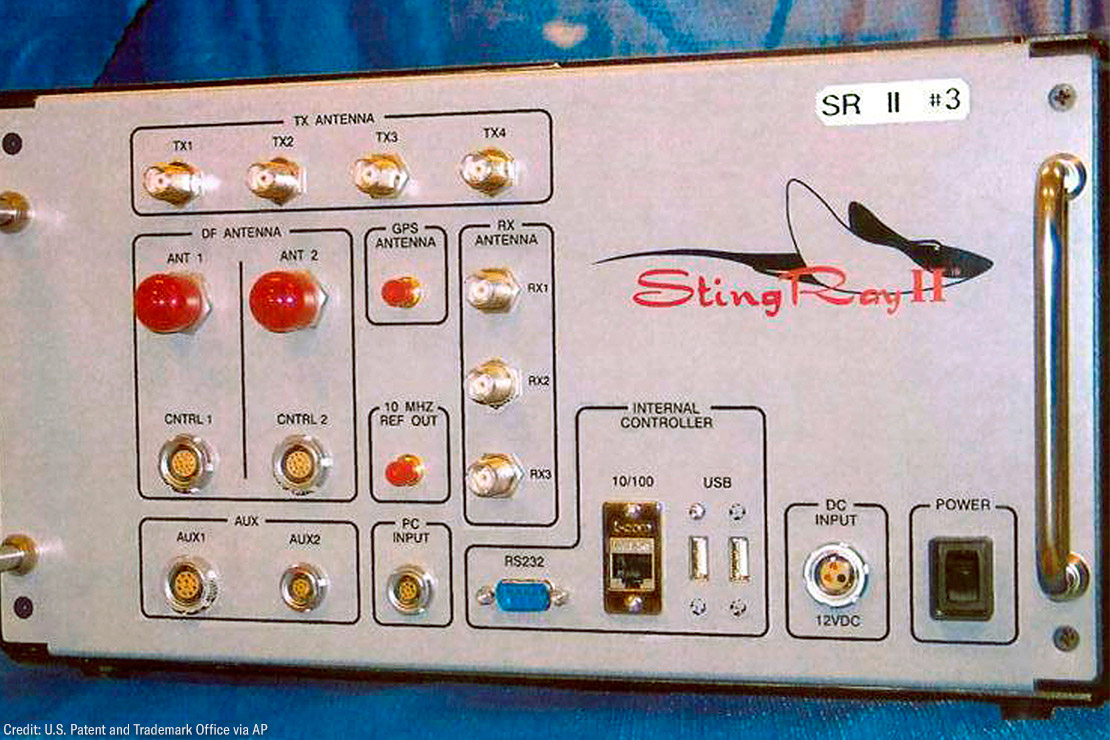
ACLU v. CBP - FOIA Case for CBP and ICE Records Related to the Use of Cell-Site Simulator Technology
What's at Stake
On May 19, 2017, ACLU submitted a FOIA request to U.S. Immigration and Customs Enforcement (ICE) and Customs and Border Protection (CBP) demanding records on the federal government's acquisition and use of "cell site simulators" (also known as "Stingrays" or "IMSI catchers"), powerful surveillance devices that target cell phones by impersonating a wireless service provider's cell tower. For more than two years, the two agencies failed to properly process the Request or produce any responsive records until the ACLU sued on December 11, 2019.
Summary
Cell site simulators impersonate a wireless service provider’s cell tower, prompting cell phones and other wireless devices in the area to communicate with them. The devices are commonly used in two ways: to collect unique numeric identifiers associated with phones in a given area in order to identify the phones and their users, and to ascertain the location of a phone when agents know its unique numeric identifier but not its precise location. Although numerous law enforcement agencies across the country have released significant information about their use of cell site simulators in recent years, little information is publicly known about the use of cell site simulators by ICE and CBP or what safeguardsare in place to prevent abuse.
Both uses of the technology raise serious issues under the Fourth Amendment. Collecting unique identifiers of all phones in an area necessarily results in collection of the location data of many bystanders. And using cell site simulators to ascertain the whereabouts of a specific cell phone can reveal the potentially sensitive location of its owner, including that they are in a constitutionally protected place, such as a home. Even when a cell site simulator is used to locate a particular suspect’s phone, it necessarily solicits identifying information from bystanders’ phones. They may also interfere with nearby cellphones’ connection to the cellular network, meaning they can affect not only the intended target but also bystanders.
In 2017, the Detroit News published an article detailing ICE’s use of a cell site simulator to locate an individual for arrest and prosecution on immigration-related charges. The article left unanswered a number of questions about what kinds of investigations immigration and border enforcement authorities use cell site simulators in, how often the technology is used, and what policies and practices constrain those uses.
In order to answer these and related questions, the ACLU submitted its FOIA Request to CBP and ICE on May 19, 2017, seeking ten categories of records about the agencies’ acquisition and use of cell site simulators. For more than two years, the ACLU awaited responsive records from both CBP and ICE, to no avail.
On December 11, 2019 — shortly after a revelatory article published by Univision detailing ICE's use of the technology to locate an individual for arrest and prosecution on immigration-related charges — ACLU sued both CBP and ICE for failing to promptly make available requested records.
This case is ongoing in the Southern District of New York.
Legal Documents
-
12/11/2019
ACLU v. CBP - Complaint -
12/11/2019
Exhibit A - FOIA Request -
12/11/2019
Exhibit B - Copy of ICE Correspondences -
12/11/2019
Exhibit C - Copy of CBP Correspondences -
05/22/2020
Plaintiff's Memo in Support of MSJ -
05/22/2020
Declaration of Alexia Ramirez -
05/22/2020
Exhibit A - DHS Policy Directive 047-02 -
05/22/2020
Exhibit B - House Oversight Report - Law Enforcement Use of Cell-Site Simulation Technologies- Privacy Concerns and Recommendations -
05/22/2020
Exhibit C - Detroit News Article -
05/22/2020
Exhibit D - ACLU FOIA Request -
05/22/2020
Exhibit E - CBP Response Letter 5.24.2017 -
05/22/2020
Exhibit F - Appeal Letter to CBP 6.9.2017 pdf -
05/22/2020
Exhibit G - CBP Response to Appeal Letter 7.13.2017 -
05/22/2020
Exhibit H - ICE Response Letter 9.20.2017 -
05/22/2020
Exhibit I - ACLU Letter to ICE 9.20.2017 -
05/22/2020
Exhibit J - ICE Letter Construing Admin Appeal 10.18.2017 -
05/22/2020
Exhibit K - Univision Article -
05/22/2020
Exhibit L - Transcript 2.3.20 Conference -
05/22/2020
Exhibit M - CBP Letter 3.26.2020 -
05/22/2020
Exhibit N - ICE Initial Production Letter 3.4.2020 -
05/22/2020
Exhibit O - ICE Supplemental Production Letter 4.28.2020 -
05/22/2020
Exhibit P - ICE Second Supplemental Production Letter 5.20.2020 -
05/22/2020
Exhibit Q - CBP Third Supplemental (May 21, 2020) -
05/22/2020
Exhibit R - DHS Letter to Sen. Ron Wyden -
05/22/2020
Exhibit S - DHS Response to Sen. Al Franken's August 24, 2017 Letter
Date Filed: 12/11/2019
Court: District Court (S.D.N.Y.)
Download DocumentDate Filed: 12/11/2019
Court: District Court (S.D.N.Y.)
Download DocumentDate Filed: 12/11/2019
Court: District Court (S.D.N.Y.)
Download DocumentDate Filed: 12/11/2019
Court: District Court (S.D.N.Y.)
Download DocumentDate Filed: 05/22/2020
Court: District Court (S.D.N.Y.)
Download DocumentDate Filed: 05/22/2020
Court: District Court (S.D.N.Y.)
Download DocumentDate Filed: 05/22/2020
Court: District Court (S.D.N.Y.)
Download DocumentDate Filed: 05/22/2020
Court: District Court (S.D.N.Y.)
Download DocumentDate Filed: 05/22/2020
Court: District Court (S.D.N.Y.)
Download DocumentDate Filed: 05/22/2020
Court: District Court (S.D.N.Y.)
Download DocumentDate Filed: 05/22/2020
Court: District Court (S.D.N.Y.)
Download DocumentDate Filed: 05/22/2020
Court: District Court (S.D.N.Y.)
Download DocumentDate Filed: 05/22/2020
Court: District Court (S.D.N.Y.)
Download DocumentDate Filed: 05/22/2020
Court: District Court (S.D.N.Y.)
Download DocumentDate Filed: 05/22/2020
Court: District Court (S.D.N.Y.)
Download DocumentDate Filed: 05/22/2020
Court: District Court (S.D.N.Y.)
Download DocumentDate Filed: 05/22/2020
Court: District Court (S.D.N.Y.)
Download DocumentDate Filed: 05/22/2020
Court: District Court (S.D.N.Y.)
Download DocumentDate Filed: 05/22/2020
Court: District Court (S.D.N.Y.)
Download DocumentDate Filed: 05/22/2020
Court: District Court (S.D.N.Y.)
Download DocumentDate Filed: 05/22/2020
Court: District Court (S.D.N.Y.)
Download DocumentDate Filed: 05/22/2020
Court: District Court (S.D.N.Y.)
Download DocumentDate Filed: 05/22/2020
Court: District Court (S.D.N.Y.)
Download DocumentDate Filed: 05/22/2020
Court: District Court (S.D.N.Y.)
Download DocumentDate Filed: 05/22/2020
Court: District Court (S.D.N.Y.)
Download Document